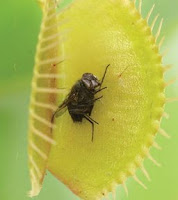 Going out and exploring outside the Montessori classroom is an opportunity that many Montessorians take for granted. With budget cuts and teachers worried about time away from the classroom, which can impact their ability to fulfill state-mandated curriculum goals, many public schools aren't organizing field trips any more. My son's friend who attends the local public middle school is always so jealous every time we mention our field trips; "I sure wish we could take field trips instead of always sitting in class."
Going out and exploring outside the Montessori classroom is an opportunity that many Montessorians take for granted. With budget cuts and teachers worried about time away from the classroom, which can impact their ability to fulfill state-mandated curriculum goals, many public schools aren't organizing field trips any more. My son's friend who attends the local public middle school is always so jealous every time we mention our field trips; "I sure wish we could take field trips instead of always sitting in class."It's so important to remember that as adults, we often feel that going on field trips and leaving the comfort of the Montessori classroom is such a hassle: there are permission forms to be signed, money to collect, drivers and chaperones to organize, emergency trips to the bathroom, and then the excitement doesn't seem to wear off when you return to the classroom. However, we must remember to view these going out experiences through the eyes of the child. They haven't the experience that we adults do. It's our duty to make sure that they can experience all there is while they are still full of awe and wonder.
Going Out activities are an important part of the second and third planes of development.
Montessori Education: The Importance of Going Out From a Child's View
These activities might involve taking a one-day field trip to an art gallery, attending an afternoon concert by a local symphony, spending the day doing volunteer work, or going on a three-day camping trip.
 Last fall, I took my Montessori students to the North Carolina Botanical Gardens in Chapel Hill. We were studying plants native to North Carolina and the guides took us along the Piedmont Nature Trail. (Piedmont is French for ‘foothills’). My twenty students arrived armed with sketchbooks and artists pencils. We broke into two groups and listened eagerly as the guides helped us identify the myriad of flora and fauna found veritably in our own backyard. We learned about the workings of the forest as well as forest ecology. The children were fascinated to learn that North Carolina has the highest percentage of lightning strikes in the nation and that some of the pine trees have evolved to better withstand the forest fires that ensue from those lightning strikes.
Last fall, I took my Montessori students to the North Carolina Botanical Gardens in Chapel Hill. We were studying plants native to North Carolina and the guides took us along the Piedmont Nature Trail. (Piedmont is French for ‘foothills’). My twenty students arrived armed with sketchbooks and artists pencils. We broke into two groups and listened eagerly as the guides helped us identify the myriad of flora and fauna found veritably in our own backyard. We learned about the workings of the forest as well as forest ecology. The children were fascinated to learn that North Carolina has the highest percentage of lightning strikes in the nation and that some of the pine trees have evolved to better withstand the forest fires that ensue from those lightning strikes.During the hike, my students would see an interesting tree or flower and sit down on the walkway and begin sketching. At first, the guide was unsure what to do; he wasn't used to children being such active participants. But he soon caught on and started making suggestions of what they might like to sketch at certain vantage points.
 I have to admit that the highlight of the trip was the carnivorous plant garden. North Carolina (and the southeastern United States) is home to a variety of species of pitcher plants, sundews, butterworts, and the ever popular Venus flytrap. My students had such fun scouting for insects to feed to the plants!
I have to admit that the highlight of the trip was the carnivorous plant garden. North Carolina (and the southeastern United States) is home to a variety of species of pitcher plants, sundews, butterworts, and the ever popular Venus flytrap. My students had such fun scouting for insects to feed to the plants!At last, our time had come to thank our guides and say goodbye. However, the students had found a life-size chess board near the parking lot. What fun we had pretending we were at Hogwart’s (Harry Potter) playing chess with Harry, Hermione, and Ron!
When we returned to school, some settled down to color our sketches, others researched more about carnivorous plants, and a few curled up in the library with their favorite Harry Potter book. I’d have to say that better learning couldn't have happened that day had we stayed in the classroom.
Read more on the Going Out series.
As much as possible, NAMC’s web blog reflects the Montessori curriculum as provided in its teacher training programs. We realize and respect that Montessori schools are unique and may vary their schedules and offerings in accordance with the needs of their individual communities. We hope that our readers will find our articles useful and inspiring as a contribution to the global Montessori community.
© North American Montessori Center - originally posted in its entirety at Montessori Teacher Training on Sunday, March 30, 2008.
© North American Montessori Center - originally posted in its entirety at Montessori Teacher Training on Sunday, March 30, 2008.

0 comments:
Post a Comment
Have questions or comments? Let us know what you thought about this article!
We appreciate feedback and love to discuss with our readers further.